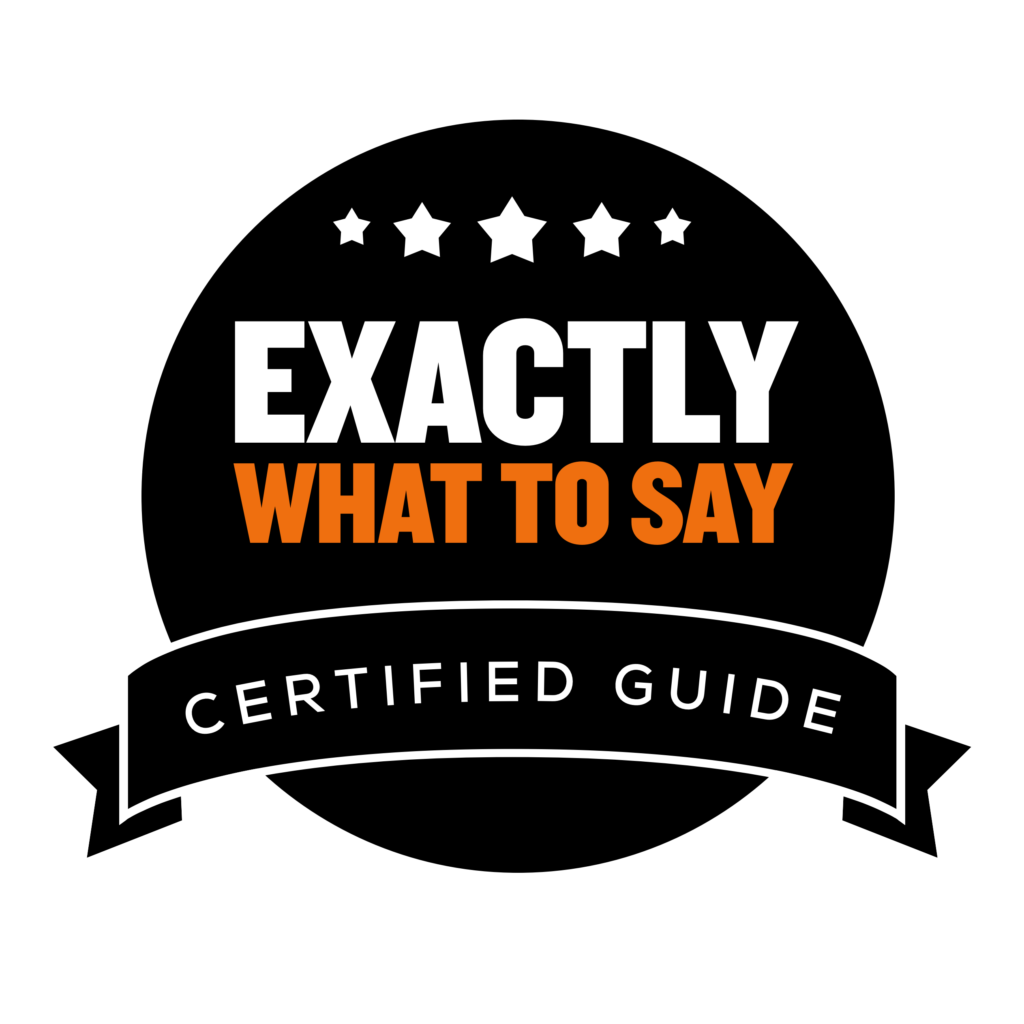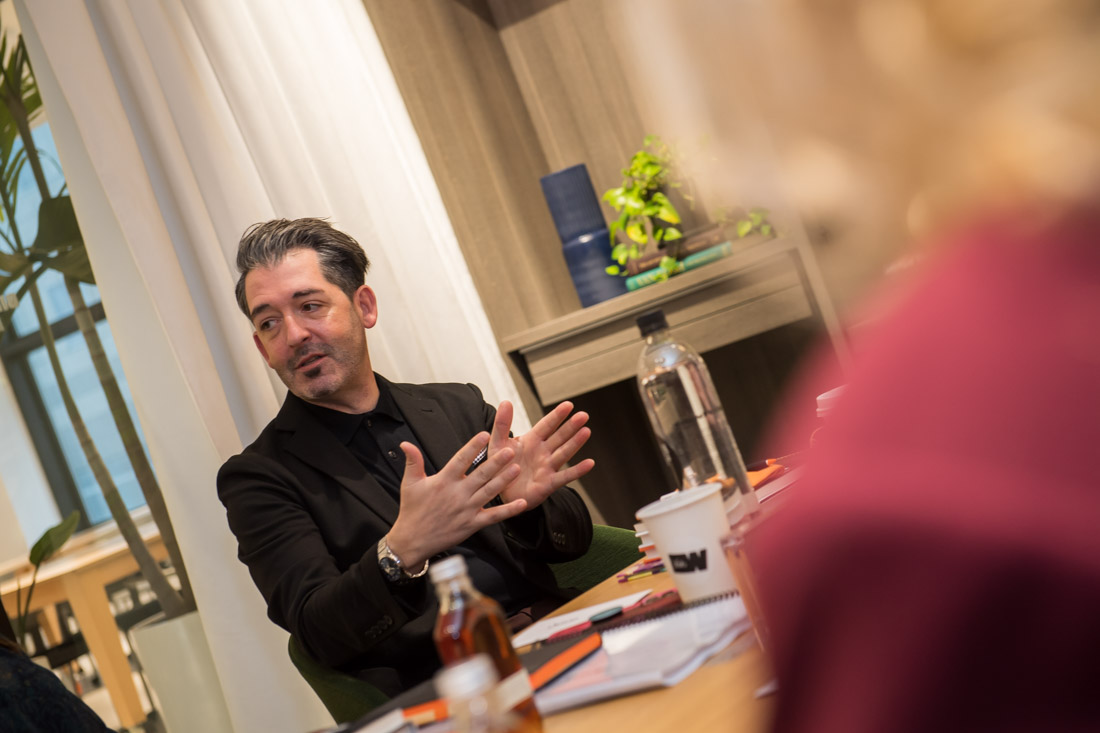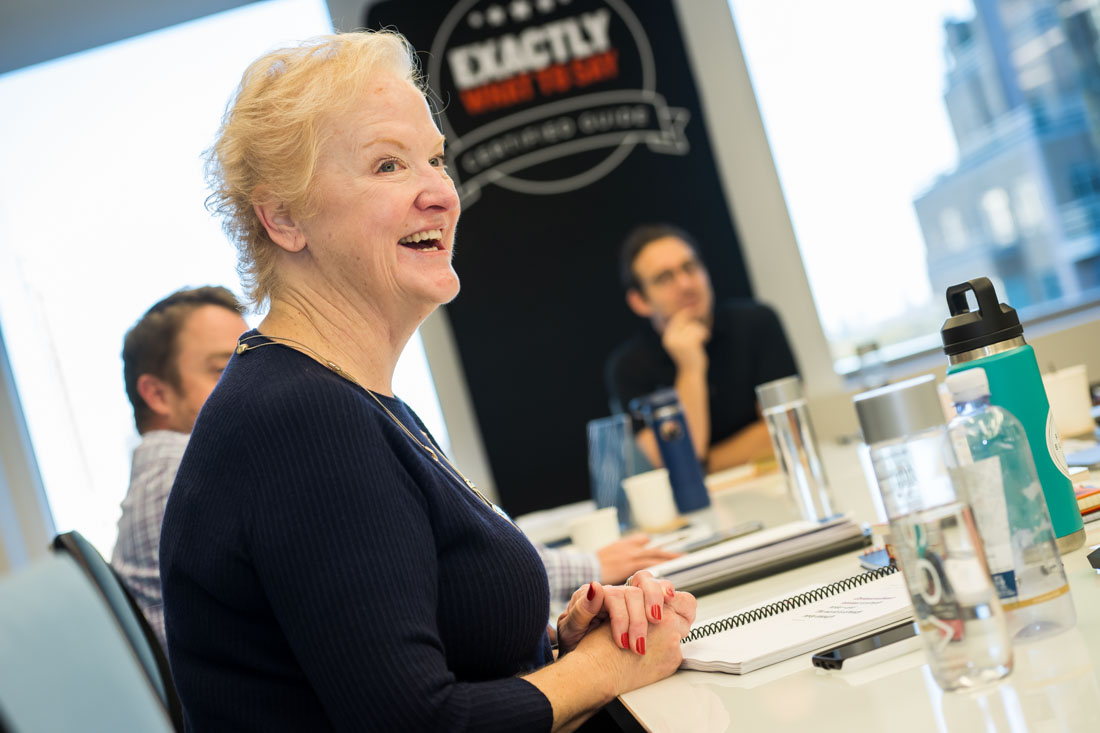Do you want to be a better speaker? Would you like to feel more confident on stage? Exactly What To Say Certified Guide, Tanis Roeder is a Communication Expert with over 10 years of experience as a professional speaker. She works with business leaders, individuals, and corporate teams to improve their speaking and communication skills.
Throughout a recent masterclass delivered for her fellow Certified Guides, Tanis focused on the psychological and physical aspects of speaking, condensing down her ‘best practices’ that will calm your nerves and help you present flawlessly with confidence and ease.
Overcome Your Fear
It’s one thing to get nervous and another to be afraid. Fear can seriously affect your stage presence and delivery. Often it will make you appear like you don’t know what you are doing.
It’s natural to get nervous before an event, it shows that you care, but fear will limit your potential.
The good news is that there are things that you can do to overcome the fear.
Worrying about the audience is a really common problem. You could worry about who the audience members will be, what they might ask, or, one of the scariest possibilities, that you won’t be able to answer their questions.
These thoughts can be overwhelming and increase fear so much that they have a physical effect on your body. You might shake, blush, or stutter.
Fear will cause you to doubt yourself so much that you are unable to present yourself in the way that you want to.
So what can you do to manage the fear?
Rationalize
The best thing that you can do is stop and rationalize.
Like all professional speakers, Tanis has had to overcome fear and nerves before events. The moment that she starts to tear herself down, she stops and rationalizes.
One activity you should do is make a list of absolutely everything that could go wrong, including anything that you’re worried about happening.
These could be technical issues, forgetting what to say, or being unable to answer a question.
Determine the likelihood of these things happening and number them from 1 – the most unlikely to 10 – the most likely. Then you simply work backwards starting at all of your 10s.
Think about what you could do if that worst-case scenario happens, and then physically write it down.
Tanis does this before every event and by the time she gets to the stage, her fear will have almost completely dissipated. She might still feel nervous, but she’s eliminated the fear, which is essential.
Develop Your Physical Speaking Skills
Once you’ve got a hold on the psychological side of speaking, you should practice your physical skills.
How you present on stage can let you down if you’re not prepared.
Nervous displays of emotion can come out when you’re worried but don’t fret, because Tanis has some fantastic “Best Practices” that you can use every time you speak to two or more people.
Your audience will be judging you on what they see and what they hear and these practices will help you to appear professional, at ease, and probably way more confident than you’re feeling on the inside.
Eye Contact
People listening to you speak want to like you and eye contact is one of the keys to making this happen.
Good eye contact builds rapport and rapport leads to likeability. If you’re scanning over the audience and not making strong eye contact, people won’t connect with you. Tanis teaches the power of SPOC:
- Single
- Person
- One
- Connection
You know that it’s important to make a genuine connection with your audience and the way to do this is through the eyes. Be mindful of SPOC as you’re looking out into your audience.
When it comes to eye contact, the question Tanis gets asked the most is how long should you hold eye contact, and the truth is that there is no set time. It’s going to fluctuate with every event.
It often depends on what you’re saying, what point you’re trying to put across, but you will get a feel for it the longer that you practice this.
Eye contact is easier to manage in a smaller setting and gets harder the bigger the stage you are on, but this is where the work before the work comes in.
Go and see your stage ahead of your talk. Stand up there and walk around the space. Figure out where the audience will be sitting, and where their eyes will be. This means that even when you’re up there and the lights are on you, you’ll know where you should be looking.
Eye contact doesn’t just help with rapport, it can help you to control the pace of your voice too so make sure that you stay with each person longer, and your pace will naturally follow.
Tanis Roeder Tweet
Think About Your Stance
People naturally tend to stand feet together but this stance can make you appear smaller, and it also puts pressure on your back.
When you’re speaking and standing still, make sure to stand hip-width apart to give you a strong base, and remember – don’t lock your knees!
Working to have no movement from the waist down is one of the most powerful places you can be as a speaker. If you sway or move around you can appear nervous.
Movement is great if you’ve got a big space, but if you get stuck in the common two steps alteration, you can appear to be pacing.
Follow the 4×4 rule when you move. Take at least 4 steps to look like you are moving with purpose. Once you’ve taken 4 steps, plant your feet and make eye contact with at least 4 people before you move again.
You should be mindful of your planes of movement too. Don’t just stick to a side-to-side shuffle, you can walk forward and backward too.
All movement should be purposeful when speaking so plan it out!
Mind Your Hands
Have you ever been talking at an event and started to panic thinking about what you should be doing with your hands?
You’re not alone!
Knowing what to do with your hands is hard and a really common mistake that inexperienced speakers make. It’s worth bearing in mind that there’s also no set rule of exactly what you should do with your hands but there are some definite no-nos!
You should never do the following:
- Hands Behind Your Back - Palms show that you're honest and open to connection, when you put them behind your back the audience feels that you’re trying to hide something.
- Fig Leaf -Typically men will grasp a hand and hold it down, whilst women interlace fingers and hold them down. Once you get comfortable here you tend to gesture from that area and an audience will always be drawn to your hands. This is not the area that you want them to be looking at.
- “Political” Splayed Fingers -The fingertip touch is a common gesture used by those in politics and often comes across as cocky and arrogant.
The greatest gestures are palm-out gestures. It demonstrates that you’re open, honest, and looking to connect.
Vocal Variety - How To Speak
Now you’ve got tips on what the audience sees, let’s focus on what your audience hears.
The very best way to practice your speaking skills is to record yourself and then watch it back. A lot of people speak with the 3-5 note range and they never know it because they haven’t heard it.
These are the areas that you need to be aware of:
- Power
- Pace
- Punch
- Pitch
- Pause
Typically your voice should get louder when on stage. Don’t assume that the microphone will do the work for you.
Think of the power range as 1-10, 1 being the softest and 10 the loudest. The recommended number to hit is 7.
When it comes to pace, you should mix it up, and it’s here that you can get the punch and the pitch involved too.
If you’re someone who struggles with filler words you need to get someone to point them out to you every time you use them. This is the only way to successfully train it out of you. Filler words will prevent you from pausing in the right places and can become annoying (think of all those unnecessary ‘like’s’ some people use!)
A top tip is to consciously develop 3 different speeds of speech.
If you speak fast insert a medium and slow. If you speak slowly, insert a medium and fast. Whatever you do, remember that a great speech rarely goes slow, medium, fast, slow medium, fast. You need to mix it up and jump around with consciousness.
Putting It All Together
Becoming an expert speaker will not happen overnight. It takes a lot of work and practice and you’ll need to refine your skills and make improvements throughout your journey.
When you’re on stage commanding an audience you have become a storyteller. Your job is to hold their attention and tell your story in the most impactful way possible. Once you start polishing these techniques when you tell your story, your confidence will skyrocket.
Tanis Roeder Tweet
Ask yourself the following before your next talk:
How can you use the space available to annotate the story you’re telling?
How can movement amplify the message that you’re sharing?
How can you make the best connection to gain their trust?
Everything the greatest speakers do on stage is executed with purpose. There are no accidents to their pauses, their movement, or their speaking technique. Thoughtful planning and practice have gone into every single event, and that is how they nail it!
If you want help with any of these areas then you can reach out to Tanis here.











